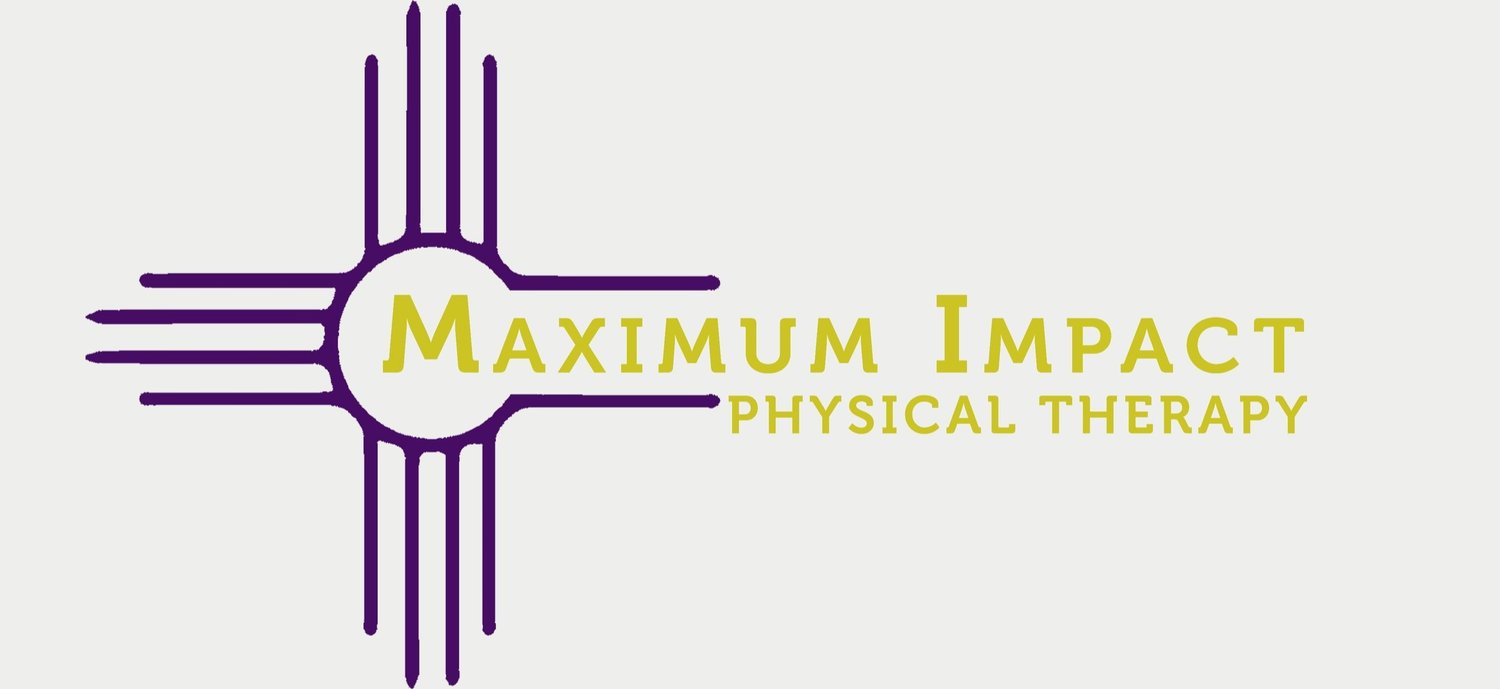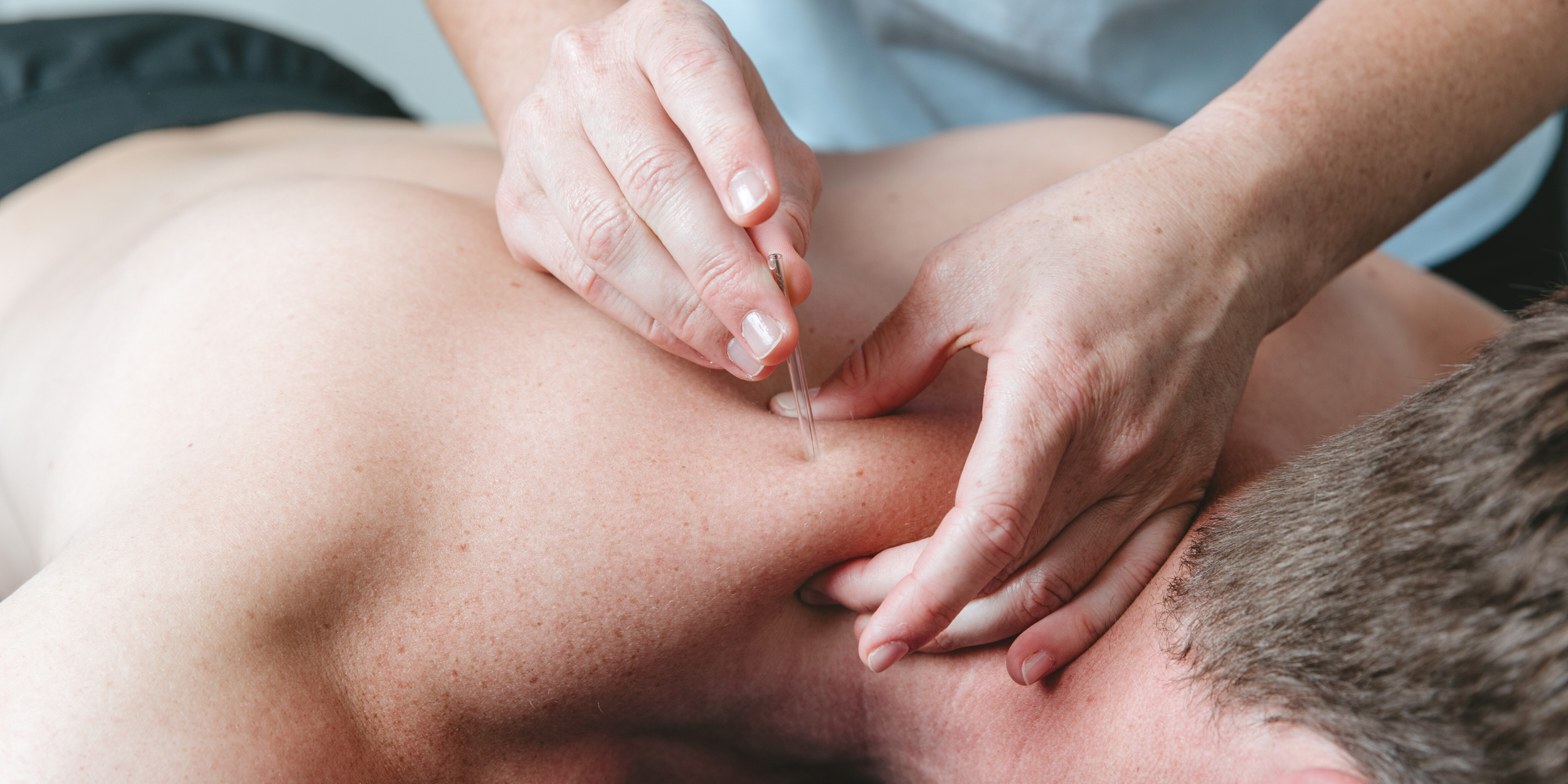Services & Treatments
Maximum Impact Physical Therapy takes a robust approach to treatment, using various modalities to provide the best care for each individual. Our treatment options are detailed below.
Integrative Dry Needling
Nerve inflammation is a critical factor in chronic pain, often resulting from a variety of causes like overuse, physical trauma, emotional stress, dehydration, or excessive training. When nerves become inflamed, muscles naturally tighten up to protect them, leading to the familiar tightness and knots. This protective response, while well-intentioned, can sometimes lead to more pain than it prevents.
Dry needling is an excellent complementary technique in our treatment arsenal, particularly beneficial when dealing with multiple dysfunctions. As physical therapists, our initial instinct might be to focus on the area where pain is most apparent. However, dry needling allows us to uncover the root cause of the pain. For example, in cases of shoulder joint or rotator cuff injuries, patients may identify a specific painful spot. Nonetheless, the actual origin of pain might be elsewhere. We often encounter diffuse, dull pain that varies with different head, neck, and shoulder positions, not aligning with a specific joint injury. In such scenarios, we consider the role of myofascial restrictions and their contribution to the pain experience.
-
Dry needling is holistic, addressing not just muscle pain and trigger points, but also focusing on key areas known as homeostatic points. These are specific nerve points scattered throughout the body, ideal for nerve stimulation. By targeting these points through needling, we help the nervous system relax and reduce inflammation, which in turn lessens pain.
This is achieved by softly tapping thin needles into the area of pain, similar to acupuncture.
-
To help ease any concerns about dry needling, it's helpful to understand what to expect during the treatment. When a physical therapist finds trigger points using their fingers, you might experience some pain or a referral sensation at that spot. However, when the needle is inserted, the discomfort isn't more intense than what you feel during this initial probing.
The key difference lies in the sensation when the needle enters the myofascial knot. You might feel a contraction or a dull ache along the referral path, which is a unique sensation compared to finger pressure. This feeling is often more of a surprising deep ache rather than outright pain. It's important to note that while fingers need to press through several layers of tissue to reach these points, which can be quite painful, the needle achieves this more directly and with less overall discomfort.
The sensation caused by the needle is typically quick and tends to fade within a few seconds. Understanding these differences can make the experience less daunting and more manageable.
-
Post-dry needling, mild muscle soreness is common but usually fades within 24 hours. You can resume normal activities afterward. For better recovery, increase your water intake and avoid anti-inflammatory medications to maximize treatment benefits.
Muscle Activation Techniques®
Over time, stress, trauma, and overuse can result in inflammation in the body. Inflammation creates inefficiencies in the muscular system and diminishes neuromuscular function. Muscle Activation Techniques (MAT) work to correct muscular inefficiencies and restore neuromuscular function.
-
Over time, the communication between the nervous and muscular systems can deteriorate. This breakdown can lead to changes in body mechanics, often manifesting as muscle tightness, pain, and other physical issues commonly associated with aging. This compromised communication, whether due to a single traumatic event or ongoing micro-traumas, affects the efficiency of muscle contractions. This inefficiency can progressively weaken muscles, increasing vulnerability to pain, injuries, and chronic degenerative conditions.
Muscle Activation Techniques (MAT) aim to reestablish these crucial communication pathways, enhancing muscle contractility and functionality. A key sign of reduced muscle contractility is a limited range of motion. Therefore, MAT assessments start with a detailed muscle-specific joint range-of-motion evaluation. This approach enables the certified therapist to accurately identify muscles with compromised nerve communication. They then conduct tests and activations on these muscles, aiming to restore joint range, stability, and thereby improving strength while reducing pain and inflammation.
-
One method of muscle activation employs a targeted palpation technique. This approach stimulates the muscle's sensory receptors, enhancing the feedback from the peripheral nervous system to the central nervous system.
The second method involves a specific isometric exercise tailored to each position. This technique is aimed at boosting the motor output from the central nervous system to the muscles.
As these techniques help reforge the connection between the central nervous system and the muscular system, the affected muscles regain their ability to function through their complete range of motion. This restored functionality not only enhances protective capabilities but also provides the body with improved stability and mobility.
NEUBIE by NeuFit
NEUBIE is a neuro bio-electric stimulation machine used to identify specific areas with disconnects between the nerves and the muscles.
Unlike electrical stimulation therapy devices, NEUBIE combines two waves, allowing a direct current (DC) to optimize the neurophysiological effect on the patient, without causing them to be locked up or frozen by muscular co-contraction. Other devices merely offer alternating currents to prompt change in the neuromuscular system, which triggers stress responses in patients; alternatively, NEUBIE promotes a higher parasympathetic nervous system (PNS) tone and has extensive clinical evidence showing an increase in heart rate variability (HRV).
NEUBIE's twist on the traditional electrical stimulation machine promotes eccentric contractions, which absorb force, improve performance, protect joints, and reduce injury.
“The device ends up preferentially generating sensory, afferent input, and less motor output. It is sending a sensory signal to the central nervous system (CNS), and the CNS can respond by either relaxing into that signal or fighting against it. The ability to preferentially send afferent signals is extremely important, as it lays the foundation for many other neurological reprogramming protocols for which the NEUBIE is use.”
How can NEUBIE help?
-
NEUBIE's targeted focus on finding deficiencies allows therapists to pin-point pain sources that may not be immediately obvious. NUEBIE helps to isolate and improve existing dysfunctional neurological patterns. Results include improved function and an acceleration of the body’s natural healing. This allows the symptoms to dissipate more quickly than with traditional therapy.
-
NEUBIE workouts can increase workout intensity and reduce the amount of gym-time necessary to build the same amount of muscle.
-
Increased performance can be obtained by working through strategic joint mobility drills and lots of eccentric movement with an emphasis on position while being neurologically stimulated by the NEUBIE neurological stimulation. This improvement is quicker than traditional training methods.
Instrument-Assisted Soft Tissue Mobilization (IASTM)
Instrument Assisted Soft Tissue Mobilization (IASTM) is an advanced form of myofascial mobilization—similar to deep-tissue massage. It is primarily used to detect and release scar tissue, adhesions, and fascial restrictions.
In Chinese medicine, this is referred to as Gua Sha. The goal is to trigger an inflammatory healing response. This will stimulate the production of new collagen and proper, functional, pain-free healing.
-
Anyone with a soft tissue injury or restriction. This is a good treatment option for patients whose soft tissue injuries decrease their range of motion and/or cause pain during movement or result in muscle spasms.
Note: Patients on blood thinners, with weakened immune systems, or that bruise easily may can still benefit from IASTM; however, pressure applied would be less intense, possibly with less strokes per area in the first few treatments.
-
Decreases overall time of treatment
Allows faster rehabilitation/recovery
Reduces need for anti-inflammatory medication
Can resolve chronic conditions thought to be permanent
Great for soft tissue injury recovery, tendinitis, etc.
Clients can continue to engage in everyday activities
-
Most patients begin to feel immediate results but generally will notice real lasting relief and improved range by the third or fourth treatment. Some of the conditions treated with IASTM therapy include:
Achilles tendonitis
Carpal Tunnel Syndrome
Shin splints
Scar tissue adhesions post-surgery including Caesarean scarring
Plantar fasciitis
Lumbar and cervical strains
Rotator cuff tendonitis
Hand pain
After your treatment, you may feel sore and possibly notice some small amounts of bruising (bruising is not typical but can happen). Throughout the day, the healing inflammatory process is taking place, so general soreness is normal and you should avoid taking anti-inflammatories unless you are experiencing true pain.
Personal Training & Exercise Programming
Single Session
-
Personalized workout
-
N/A
Eight Sessions
-
Personalized workout including movement screens with corrective exercise homework
-
4-6 weeks
Fifteen Sessions
-
Personalized workout including movement screens with corrective exercise homework
-
8-10 weeks
Optimal Wellness
-
One wellness visit, including:
review of goals
form + movement screens (as needed)
dry needling / cupping / scraping (as needed)
review of exercises that were difficult or caused pain
Full month of customized programming
1x/week coaching call
Form and movement checks via video
App access to your custom program
-
monthly
Customized Coaching
-
Full month of customized programming
1x/week coaching call
Form and movement checks via video
App access to your custom program
-
monthly
As a golfer, you probably know that there are an infinite number of ways to swing a club. By working with a Titleist Performance Institute (TPI)-certified physical therapist, you can learn about your own physical capabilities and limitations—and the effect they have on your golf game. Our clinicians will perform a comprehensive physical screening and movement assessment designed to identify any biomechanical issues that may be causing you pain or holding you back from having your best game yet.
Titleist Performance Institute (TPI) Assessment & Golf-specific Programming
GOLF ANALYSIS: BRIDGING THE GAP BETWEEN HEALTHCARE & SPORTS PERFORMANCE
Our TPI certified physical therapists will guide you through a physical screen designed to assess mobility, stability, muscle imbalances, lower crossed, and upper crossed syndromes. First, your clinician will explain how these findings impact your ability to move throughout the golf swing. Then, they’ll create an individualized treatment plan to address any biomechanical issues discovered during the screen. This plan may include manual therapy, strength training, corrective exercises, and/or proprioceptive training. Your therapist may perform re-assessments throughout your treatment program to measure your progress and ensure that they’re making proper modifications/advancements to your exercise plan.
What is TPI? Titleist Performance Institute (TPI) is the world’s leading educational organization dedicated to the study of how the human body functions in relation to the golf swing. Since its inception in 2003, TPI has studied thousands of golfers ranging from the top professional Tour players to weekend enthusiasts. During this time, TPI discovered that a properly functioning body allows a player to swing a golf club in a more efficient way. Additionally, TPI has analyzed how physical limitations in a player’s body can adversely affect the golf swing and potentially lead to injury.
Is this a swing analysis? We are looking at your swing and performinga video analysis to identify limitations, but TPI-certified practitioners are not swing coaches or golf professionals. Technical corrections to your swing are something that a golf professional is far more qualified to help you improve. Our physical therapists will analyze your body’s physical abilities and limitations as they relate to the golf swing from a biomechanical perspective. We can work with your golf professional to help you achieve your optimal swing performance.
Does a PT replace my golf pro? TPI medical professionals coordinate closely with your golf professional or swing coach to keep the lines of communication open and ensure that you are receiving the best treatment.
YOUR GOLF GAME IS BETTER WHEN IT’S PAIN-FREE
Ready to take your game to the next level?
The golf swing is a complex total body movement system that is performed over and over again throughout a round and over the course of the golf season. No wonder it’s so important to understand how your body is moving and how you can make it more efficient!






